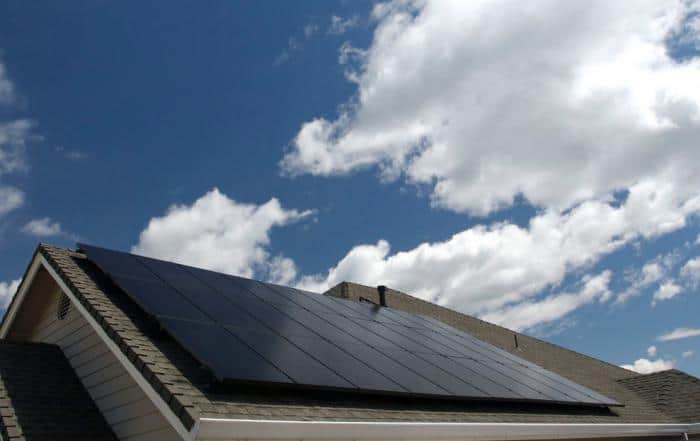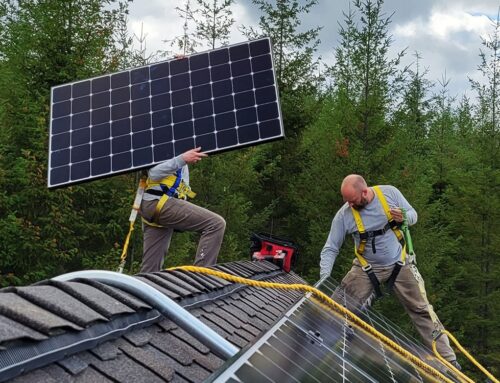Incredible strides in renewable energy technologies are making alternative power sources more obtainable than ever for American homeowners. Solar panels are now sleek and design-conscious. Incredibly efficient, greener batteries are making it possible to store the overbalance of solar and wind energy in homes. Technology upgrades, storage improvements, and equipment capabilities all contribute to more efficient power output and lower costs for systems.
The affordability and viability of alternative sources of energy is enticing many new homeowners to add a solar or wind system to their homes. While both options are environmentally friendly and a smart way to lower energy costs, there are some key differences between solar and wind energy that homeowners should consider.
The Solar Energy vs. Wind Energy Checklist
How is power generated?
Solar: Solar power is generated by capturing the sun’s energy and converting it to electricity. The sun releases energy in the form of photons. When these photons hit a solar cell, they knock electrons loose. Solar cells are made of silicon and contain a positive layer and a negative layer. Together, these create an electric circuit that the electrons flow through to generate electricity. Multiple solar cells sit on a solar panel, and with more panels comes more energy. Solar systems need an inverter to transform electricity into power for your home, and SunPower® panels have a smarter inverter setup than conventional panels. With microinverters under each panel, the panels operate independently—allowing greater efficiency in the shade because only the panels directly involved are affected. Most conventional systems rely on one central inverter, meaning the whole system can be affected by a single instance of shade.
Wind: Wind power is generated when the wind turns the propeller-like blades of a turbine around a rotor, which spins a generator and creates electricity. Similar to an aerodynamic airplane wing or helicopter rotor blade, when wind flows across the blade, the air pressure on one side of the blade decreases, causing the rotor to spin. This rotation turns an internal shaft connected to a gearbox, which increases the speed of rotation by a factor of 100. The rotating gearbox then powers a generator, which creates electricity. Wind turbines have the ability to generate power as long as wind currents cooperate.
Are natural elements reliable?
Solar: Using the renewable resource of sunlight, solar power can be generated on both sunny and cloudy days. SunPower panels are designed for efficiency with Maxeon® cell technology that features a smooth, light-trapping surface to capture visible, infrared, and ultraviolet light. This gives SunPower panels the ability to produce electricity even on overcast days.
Wind: Most installers recommend sites with average wind speeds of at least 12 miles per hour. But MPH isn’t the only element considered, as wind resources can vary significantly over an area of just a few miles due to local terrain influences on wind flow.
How efficient is it?
Solar: The most efficient solar panels on the market convert around 22-23% of the energy in sunlight to power. SunPower is at the top of that list with the industry’s most efficient solar panels.1
Wind: Wind turbines can convert nearly half of the wind hitting them into electrical power. While impressive, the major drawback of wind power is that wind will never blow at the same speed continuously, making it hard to predict energy output. In fact, during a wind vs. solar energy experiment, one energy company in the Pacific Northwest found that solar panels produced five times as much energy as wind turbines over a 14-month period.
How much does it cost?
Solar: There are many factors to consider when determining the price of a solar system. SunPower products offer a variety of different panel types, including the A-Series, X-Series, and E-Series. Each panel delivers a different wattage, allowing homeowners to decide what works best for their home and budget. But that’s not the only thing to consider—solar system sizes vary depending on the home they support. Some homes need more panels due to shading and other factors. Using the SunPower® Design Studio, homeowners can get an idea of the ideal system needed for their home.
Wind: The cost of installing a residential wind turbine can vary greatly depending on the size of the system, the height of the tower, local zoning, permitting, and utility interconnection costs. In most cases, larger and taller wind turbines are more expensive up front but ultimately more cost-effective over the long term. Although smaller turbines cost less in initial outlay, they are proportionally more expensive over time.
What are the maintenance requirements?
Solar: Most solar energy systems are stationary so there is minimal maintenance required beyond hosing off panels and removing debris to ensure maximum surface area exposure. SunPower products are built with reliability in mind. Our Maxeon solar cells have a thick copper foundation that is resistant to corrosion. Unlike conventional cells that break easily due to natural weathering, SunPower cells produce more energy with a longer lifespan. SunPower’s premium products need much less maintenance than other solar products in the market.
Wind: Wind turbines need to move constantly to produce power, and those moving parts will require periodic replacement due to wear and tear. Larger issues require specialized maintenance.
The Bottom Line
Any steps homeowners can take to reduce their dependence on fossil-fuel-generated energy are steps in the right direction. When looking for a more affordable option to add to your home, solar is a great option. With solar incentives like the federal solar investment tax credit (ITC) and state rebates and utility incentives, 2 homeowners have plenty of benefits available to them.
1Highest efficiency panels available: Based on datasheet review of websites of top 20 manufacturers per IHS, as of May 2019.
2Incentives, rebates, and tax credits vary and are subject to change. SunPower does not warrant, guarantee, or otherwise advise its customers about specific tax outcomes or their ability to qualify for local incentives. Consult your tax advisor regarding the solar tax credit and how it applies to your specific circumstances. A SunPower Dealer can help you determine if you qualify for other state and/or local incentives. Please visit the dsireusa.org website for detailed solar policy information.
This post originally appeared on the SunPower Resource Blog









